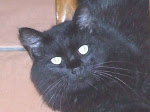I wanted to show a lot of rock formations so the eye will be catch by the scenery and not by the tiny track, and I think I got what I expected. I made a bird eye sketch with the idea I had, but later I had to remove the high rocks above the track level because they won’t fit in the box.

For the track I used a single section of “Peco” flexible track, 26” long, welding both ends together to form an small oval 6 ½” x 9” and a 3 1/8” radii. In order to weld the track in the right way I had to trim the inner rail and connect both ends together with track joiners and to secure the track over a plywood piece with push pins until weld was done and cooled. Also the wire feeders had to be welded at that time. I think this is the most important part of the job, if the tracks are not joined well or if it has a kink, the trains won’t run.

The layout drawing was made on a regular letter paper and I transferred the design to a 5/8” thick board of blue Styrofoam, which is the type used as thermal insulation on walls. This material is different than the white Styrofoam; the cells are smaller, the material is more compact and you can carve it easily with an exacto knife, a small surform file and sandpaper. The bad news is that all the debris and dust will stick everywhere, to the walls, floor, and furniture, up to your face and even to the interior of your nose. So I did this job in the back yard and the wind spreaded all the dust on my grass, and on my neighbors' grass.


After I was happy with the shape and rugged terrain, I applied a couple of coats of a spray matte primer. I wasn’t too happy with the results because it would not cover enough, besides, it leaves a shinny surface. I painted over with beige acrylic, and it looked nicer. After that I stuck it to a ¼” plywood base with hot glue. That was wrong again, the glue is too thick and leaves a gap between the Styrofoam and the plywood which I had to fill with plaster. I also applied plaster to some areas of the ravine, in order to carve thinner erosion lines and in some missing areas of the roadbed and concrete bridges. When dry I carved all the details, sanded the plastered areas and painted with different color tones all the surfaces. I crushed some loose pieces of dry plaster, small enough to looks as erosion rocks, painted with diluted acrylic paint and glue down in the ravine and at base of the cliff sides. I also added some beach sand for the smaller rocks and the sand banks.

Then I glued down the track with white glue. I had to secure the track with head pins because it tends to form a circle and not and oval. Next I applied the ballast stone over the track so it will adhere to the glue, and hold the track firmly to the Styrofoam until the glue dries. It was time for the grass, so I painted the upper areas of the terrain with white glue and spread the crushed foam ground cover to simulate the grass, after that I glued down the bushes (Landscaping Learning Kit LK954 from “Woodland Scenic”), and placed the trees.

For the buildings I made in the computer the designs in Photoshop Elements, and printed them in card paper. I Cut them out and glued it together, making cuts for the windows and doors to open a little, and painted the interior of the buildings with a dark acrylic paint.
Why do I paint the interiors? Because I wanted to install some lighting in the buildings, otherwise the light would go thru the paper. This way I make the paper to look opaque and the light goes out only thru the open windows and doors.
Conclusion:
The terrain and track looks terrific, but the cardboard buildings are not so great. The walls with open doors and windows look fine, but the tile roof looks plain, maybe would look better if the roof was made of “corrugated metal” styrene sheet (Evergreen Scale Models”) painted in orange. The trains runs good but the pulled cars got loose several times on the thigh curves.
























